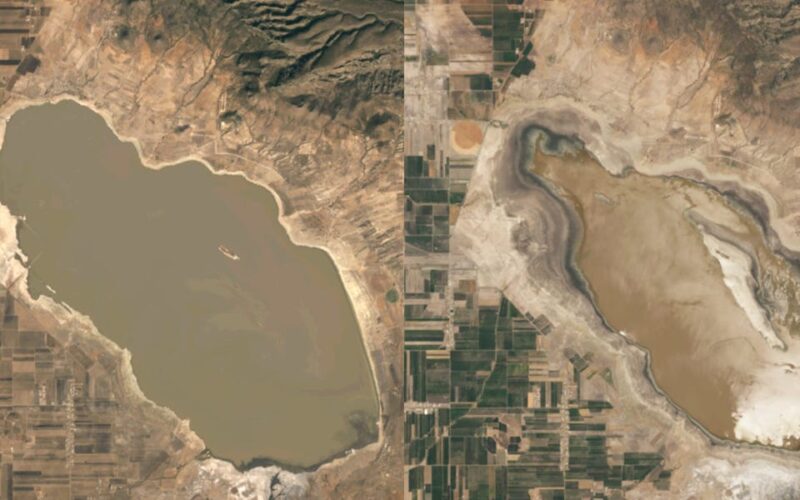Mexico is experiencing one of its most severe and widespread droughts in over a decade. Water levels are so low in some regions that you can see the effects from space.
Bustillos Lagoon in northern Mexico, for example, is at 50% of its typical capacity. The US Geological Survey released images this month from its Landsat satellites showing the shriveled-up lagoon in June compared to its size 6 months earlier in January.
USGS Earth Resources Observation and Science Center
The lagoon’s reduced capacity was deadly for thousands of fish.
Low water levels concentrated pollutants even more reducing water quality and further stressing the fish, Irma de la Pena, head of the Ecology Department in the city of Cuauhtemoc, told CNN in June.
Jose Luis Gonzalez/Reuters
Bustillos Lagoon is a significant water source for the state of Chihuahua and is mainly used to irrigate nearly 20,000 agricultural plots. With limited water, people in Chihuahua have watched their crops and livestock wither.
It’s not just Bustillos Lagoon, though. Over 85% of the country was affected by the drought in May, with some areas having little rainfall since the end of 2022, according to the National Oceanic and Atmospheric Administration.
You can see more images of drought-ridden Mexican lakes in the video below.
The drought, “created a pretty big deficit in both the northwest and the south-central parts of the country in terms of lack of precipitation,” Derek Vollmer, director of Waterscapes at WWF, told Business Insider.
The view from space is bleak, but the images from the ground show an even grimmer reality for the people, plants, and animals coping with the drought.
Some farmers can’t provide adequate water for their livestock, and cows and donkeys have died during the hot and arid months. Other farmers have left the area because the conditions are so severe, rancher Jesus Maria Palacios told Reuters in June.
Jose Luis Gonzalez/Reuters
Even the bees are perishing.
“There is almost no vegetation in the landscape right now, due to the drought,” beekeeper Adan Rascon Ramos told Reuters. That includes thirsty wildflowers, which haven’t bloomed.
As a result, bees searching for pollen have turned to what limited agricultural crops are left, and the herbicides are killing them in droves.
Jose Luis Gonzalez/Reuters
An unusually dry year
Using Landsat satellite data, researchers can determine that Mexico’s current drought is more widespread than its last one in 2011 because it affected two regions, the north and south-central.
“From hundreds of miles up in space, we’re able to look at things like drought and look at very subtle shifts in what’s happening on the landscape,” Terry Sohl of the USGS’s Earth Resources Observation and Science Center told BI.
Jose Luis Gonzalez/Reuters
Different factors led to the latest drought. Last year, El Niño failed to bring its usual precipitation to the north, and a weak La Niña affected rain levels in the south and central regions. The first half of this year was also very dry, adding to the problem, according to NOAA.
Tropical storms in June brought some relief to the central and southwest regions but northwest Mexico is still in a drought.
Over half of Mexico’s reservoirs are at or below 50%, right now. “It takes a lot of additional precipitation to build that back up,” Vollmer said. “One good set of rain isn’t going to take places out of drought.”
Vollmer said drier conditions could become more permanent in some regions. Droughts are classified based on historical averages, he said, but “we’re moving into new conditions.” What was once a drought may now be the new normal.
There are some potential measures to help safeguard against future droughts. WWF has been working in Mexico to help communities create water reserves by implementing policies to keep river systems above a certain level. Originally it was an effort to ensure biodiversity, but “it’s increasingly recognized as kind of an insurance against these drought conditions,” Vollmer said.
Source link
lol

